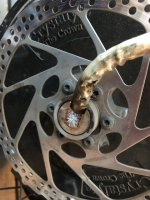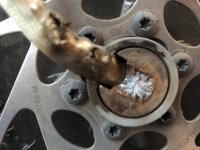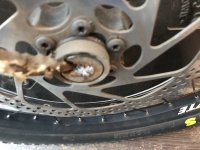NeedForSpeed
1 W
- Joined
- Dec 31, 2017
- Messages
- 64
My initial shock has led me to think of scrapping the whole thing cause I could have easily been dead if it happened at 45pmh.
I am pretty sure there was just way too much reverse torque going on, cause I had my regen setup to kick in when the throttle is released, so there was pretty frequent torquing going on for the last few months, plus the bike is pretty heavy ~120lbs plus me at 220lbs which I imagine wasn’t helping. The frame is all steel (EEB Full Suspension frame), so i didn't think about also strapping on some torque arms, which may have helped.
Anyways, curious if this happened to anyone else.
I _may_ consider replacing the axle (any advice on that would be appreciated) and then just turn regen down a ton, or turn it off all together. I’m also considering just selling everything cause I don’t want to be driving a death trap, and maybe I can convince my wife to let me buy a motorcycle since that’s really why I built this big ass bike in the first place.
So if anyone is interested in buying parts, I might list them out and give a good discount. Not sure yet.








